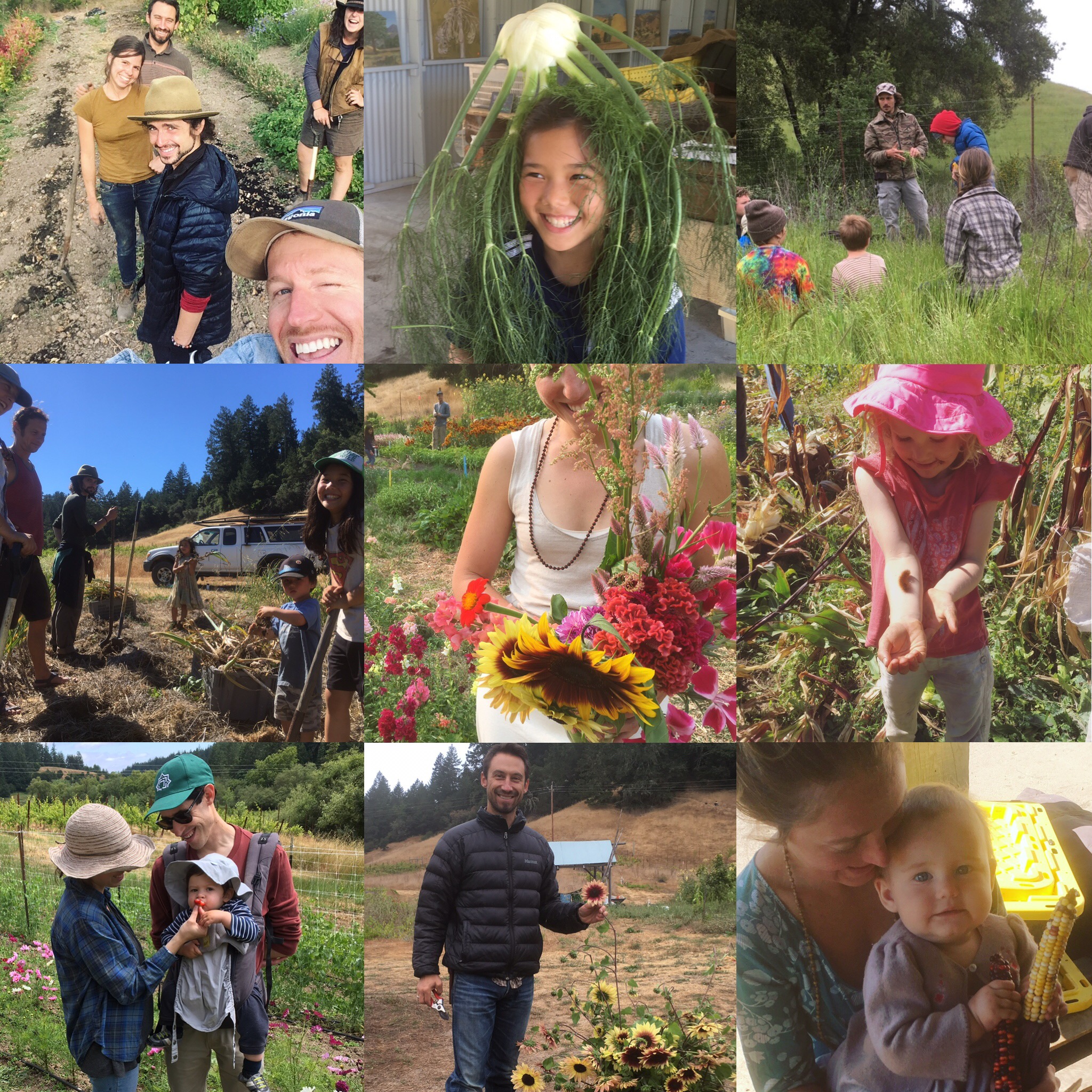This year, our second year farming this farm, brought with it new observations, new challenges, new joys, new ideas, and new wisdom about farming in this beautiful valley.
With the first hard frosts last week, the first good storms pattering on our rooftops now, and the bulk of the year's harvest safely stored away, we take a breath and reflect on this past season and look ahead to the future.
Week 24’s share
On horticulture:
One of the most unexpected pieces of advice we received before our first year, in the Winter of 2016-2017, was that horticulturally the first year would be the easiest. (An unintuitive idea, given the newness of everything in the first year.)
But it did turn out to be true. For us, it was true partly because of the simple ecological relationship between garden pests and food.
Last year we brought what few garden pests there were here a banquet. They feasted, made families, and to this year's banquet they brought their kids, their grandkids, their great-great-great grandkids, their nieces and nephews, their cousins, their second cousins, their third cousins once removed... You get the idea. We're thinking of renaming the farm to Slug City.
We experienced far more crop loss and disease to pest pressure this year than last year, which was hard on morale, but it will hone our discipline as farmers as we utilize diversity, rotation, diversity, and healthy ecology to check pest populations.
We've come away from this year with further refinement to our crop planning dates and quantities: How many bed feed of carrots should be plant? When should we plant leeks? The answers to these questions are becoming more and more honed having witnessed another season.
On systems and infrastructure:
This June we had the rude awakening to the fact that the system that supplies our storage tanks with water is not up to speed, so we'll remedy that this winter as well as experiment with planting more blocks of drip, as opposed to overhead, to keep weeds down.
We need to be better about weeds next year so we'll focus on staying disciplined on weeding, play more with stale bedding and tarping, and we'll finally get that electric cultivation tractor into the fields.
We're also planning on investing in a walk-in cooler over the winter to make harvest handling and storage easier on our bodies.
On people and community:
By far the heart of the farm for us is the social fabric surrounding it, and this year it grew and took on a life of its own. The farm's natural gifts as a place of meeting, grounding, and connecting were able to reach more people and more connections abounded.
We were thrilled to see members getting to know each other and children connecting on the farm. We were thrilled with the farm's growing collaboration the Weaving Earth Wild Tenders camp. More volunteers came out for harvests and Weeding Wednesday than we ever expected.
It was so inspiring to have other farmers (hey, Anna and Kate!) in the mix, leaving their indelible mark in the garden and fields and barn, and defining what is possible.
Small organic farming can be dubious enterprise, but the community growing around this farm is becoming a font of inspiration, potential, and hope for a very bright future. Thanks for being part of it!
See you in the fields,
David & Kayta



